
GUEST BLOGGER J. CARRIE LAUNIUS AND CHRISTINE ANNE ROYCE
Science as a human endeavor: Biographies of those that Ask, ‘What if…,’ ’Did You Ever Think That…’ or ‘Why Do You Think….’
No matter what set of standards one uses for English/Language Arts; no matter what grade level taught, it is likely that the incorporation of biographies as one of the informational text formats is part of what is “covered.” If you follow the Common Core State Standards for the English Language Arts (CC-ELA), then biographies are part of the category focusing on literary nonfiction and historical, scientific, and technical texts. The good thing – science and STEM books can meet each of these categories as well as engaging the students. After all, who wouldn’t want to hear about:
- explorers who travel to remote destinations to better understand the geography, flora, fauna, and people of an area.
- discoverers who follow an idea and chase an understanding of how something works and more importantly how that knowledge can be used to improve life.
- curiosity that drives individuals to question things they are unsure of or seek out answers to those questions.
All these aspects can be found within biographies that delve into scientists and engineers while at the same time help educators to meet standards in the English/Language Arts areas and help to advance understanding the scientific enterprise which is part of the information within the Next Generation Science Standards.
Scientists: Pursurers of understanding and knowledge
Within Appendix H of the Next Generation Science Standards, it states that “science is the pursuit of explanations of the natural world, and technology and engineering are means of accommodating human needs, intellectual curiosity, and aspirations” (p. 96). Therefore, one could easily argue that scientists are the pursuers of explanations of the natural worlds, and those in technology and engineers use their understanding to accommodate human needs, intellectual curiosity, and aspirations.
If we think for a moment about that slight transition to what scientists are –the pursuers –that means they seek, obtain, or employ measures to accomplish a goal, course of action, or even hobby. When considering the meaning of this word, the expectation that a pursuit happens over a period of time and is not immediately accomplished.
Beyond Science as a Human Endeavor, the information in the NGSS appendices also discuss the Nature of Science. Which gives credence to how science is pursued.
For example: By grades 3-5, students should understand that “science affects everyday life.” Therefore, using biographies to help students understand how science and technology affects their current life and how the scientists and engineers over time contributed to what we have today would be a great match. Take for example the simple idea of what happens when they use the loo (the familiar British term for toilet). Sharing a book such as the 2022 Sibert Medal Winner, The Great Stink: How Joseph Bazalgette Solved London’s Poop Problem by Colleen Paeff, introduces the idea that what they may take for granted today, came from a problem in the past that an engineer decided to try and solve. Not only does this book help students understand how changes over time in science and engineering had an individual or team behind the design or discovery, but also examines aspects from a historical perspective and could be used to generate an interest in the origination of different words – such as loo, night soil, or even why periods of time were given names such as the great stink. Biographies like this one also help to incorporate some of the cross-cutting concepts such as cause and effect. Students can identify the different situations that existed and what the outcome was as Joseph Bazalgette pursued an answer to the dilemma of too much poop.
What follows are additional examples of how biographies that detail the lives of the pursuers of science engage readers not only from a historical perspective but also help the reader understand their thinking, characteristics that helped them, and the excitement they had. Each bullet point is an understanding about the Nature of Science that gives direct credence to the need to understand science IS a human endeavor. A note for those not familiar with this section of the NGSS. These bullet points are broken into grade ranges indicating what ideas are appropriate at what levels. We have removed the grade levels as we provided examples of how different biographiescan help illustrate these points. Biographies, no matter what level, can be adapted to the grade level they are being utilized with to help illustrate these points.
Men and women of diverse backgrounds are scientists and engineers.
The stereotypical scientist of a white man wearing a lab coat is something that all educators, authors, parents, and ALL members of society need to help children realize is false. ANYONE can contribute to the pursuit of science whether it is in a formal laboratory or through citizen science. The book Building Zaha: The Story of Architect Zaha Hadid (Victoria Tentler-Krylov) tells the story of Zaha Hadid, a female from Baghdad, Iraq, who dreamed of how lines came together to form designs. Her unconventional ways of thinking about art and architecture helped her to excel and have made her one of the most famous and respected architects of all time. Her structures are built around the world and bring into the design her vision of design. This vision included always wanting to achieve harmony between humans and their surroundings while having a sense of change, movement, and never standing still. Incorporating this biography into lessons provides not only connections to the ELA-CC and NGSS, but also could incorporate mathematics standards as many of her designs incorporate creative geometric designs. Elementary teachers can also ask their art colleagues to engage in a unit around this topic by allowing students to follow in Zaha’s footsteps and create their own 3D designs that follow her vision.
It is likely that the name Mary Golda Ross is not one that is well known. There may be many reasons for this including the fact that she checks off many of the areas which we consider underrepresented in the field of science. She was a woman in the engineering field nearly 100 years ago and a member of the Cherokee Nation. Her story and contributions are examined in Classified: The Secret Career of Mary Golda Ross, Cherokee Aerospace Engineer (Traci Sorell). Mary became Lockheed’s first female engineer and was instrumental in helping other women join the field. While doing this she modeled the Cherokee value of working together in mind and heart. Endnotes in the book also help the reader to learn more about four Cherokee values all of which overlap with the idea of science as a human endeavor. Unfortunately, Mary’s work was classified as alluded to in the title, so the details and specifics are not well known but nonetheless, she never stopped recruiting Native Americans and young women to study math and science.
Scientists study the natural and material world.
Helping students see how scientists study the natural and material world can be done by providing them with multiple biographies about the work different scientists have pursued. While comparing different texts about the same topic is one of the standards in the CC-ELA, providing books that help them learn about different scientists that lived at the same time or different times also allows them to see different perspectives. Examining The Leaf Detective: How Margaret Lowman Uncovered Secrets in the Rainforest (Heather Lang) and Secrets of the Sea: The Story of Jeanne Power, Revolutionary Marine Scientist (Evan Griffith) demonstrates how two women with diverse backgrounds, differing experiences, and born more than 150 years apart both explored the natural world. Pairing books such as these can spur students forward to compare and contrast the two scientist’s work, the time they lived, and what they contributed to understanding. From pursuing a better understanding of the treetop biotic life in a rainforest or the diversity of animals that called the ocean home, both biographies demonstrate how scientists used creativity, perseverance, and curiosity to examine the world not yet seen. Furthermore, as they persevere both make new discoveries that contribute to a better understanding of the world in which we live.
Another book that would allow students to compare and contrast how the natural world was studied would be Fearless World Traveler: Adventures of Marianne North, Botanical Artist (Laurie Lawlor) who helped others to explore far reaching and exotic places through her paintings.
Men and women from different social, cultural, and ethnic backgrounds choose to be and work as scientists and engineers.
What does it mean to choose science as a career? In some cases, it is not a job, but instead a passion. In some ways it is not a conscious choice but rather a resulting action. In the book Lady Bird Johnson, That’s Who! The Story of a Cleaner and Greener America (Tracy Nelson Maurer) a first Lady of America who dedicated her life to science through environmental preservation. As the wife of President Lyndon B. Johnson, Lady Bird tackled the initiative of beautification of America through the removal of junkyards, trash, and unsightly billboards, and encouraged others to follow in her footsteps and plant flowers and trees nationwide as she did in Washington D.C. Because of her role and national state, she was able to promote this effort and her initiatives through her speeches. Connecting a story such as this incorporates the two subjects discussed in this blog but also can incorporate social studies and how individuals can contribute to the good of their local communities.
To help illustrate some of the many men and women who have chosen science or engineering as their life work, Scientists: Inspiring Tales of the World’s Brightest Scientific Minds (Isabel Thomas) is a great one to bring sixty-six different scientists to light. The reader can look at scientists by field or time in history. Another book that helps to highlight many different women who entered science as a career is Wonder Woman of Science: Twelve Geniuses Who Are Currently Rocking Science, Technology, and the World (Tiera Fletcher and Ginger Rue). This book is a great resource book for middle level learners to find out more about scientists and engineers that they may not have heard about or that there are many different locations and environments in which scientists’ study.
Science affects everyday life.
A similar event occurred in 1954 and 2021. People rolled up their sleeves for a vaccination to provide protection against a virus. The Smallpox vaccine in 1954 and the COVID-19 vaccine in 2021. Viruses are just one topic within science that can impact everyday life. Science has also been fortunate to have scientists which include medical doctors who pursue answers. Two biographies help to highlight how science and the pursuit of those answers bring science to the forefront of everyday life. Thank You, Dr. Salk! The Scientist who Beat Polio and Healed the World (Dean Robbins) and Dr. Fauci: How a Boy from Brooklyn Became America’s Doctor (Kate Messner).
What would the world be like without the work of Dr. Salk and Dr. Fauci? Salk believed that polio could be prevented. Just as people quarantine now from Covid, people did the same with the scare of polio. Robbins helps to illustrate how the pursuit of science also takes perseverance as he explains that “He [Salk] and his team of scientists labored day and night, night and day.” In 1955, it was reported that his vaccine worked. Fauci, who now is “America’s Doctor” has changed every life in America and beyond. Messner explains that “He [Fauci] worked with scientists around the world. They listened to one another, gathered evidence, and searched for solutions. They shared ideas, discovered new information, and revised ideas.” Both men have made huge impacts on our health system and have contributed to understanding viruses and vaccines that have saved many lives. These two biographies examine the lives of each of these men by sharing their dedication and perseverance. Not only do these two biographies help to illustrate how science affects everyday life but also that most scientists and engineers work in teams which is another point included within Appendix H of the NGSS.
Creativity and imagination are important to science.
Spy craft – something that appears in many different movies and stories. Where there are spies, there needs to be spy hunters! This became very evident after World War I, when the US needed assistance to decode secret messages. Code Breaker, Spy Hunter: How Elizabeth Friedman Changed the Course of Two World Wars (Laurie Wallmark) describes how Elizabeth Friedman turned from being a researcher in English literature to be a head of a cipher staff decoding secret messages along with her husband. As she learns more about how codes are used and understands them, she realizes that these codes frequently change so that messages are not decoded. From simple ciphers to stop rumrunners to decoding the German transmissions from Enigma, Elizabeth continued to adapt her thinking and use both creativity and imagination to foresee how to figure out each code. This is another book that crosses multiple subject areas and can engage students in investigations similar to what Elizabeth Friedman did as she pursued understanding cryptanalysis.
Another story about a creative genius and inventor is shared in A Life Electric: The Story of Nikola Tesla (Azadeh Westergaard) which tells of the many contributions Tesla made throughout his life. His patents were vast, from radar to remote-control to wireless communication. His imagination was limitless, and his work exceeded all others known who pursued the use of electrical energy.
Scientists and engineers rely on human qualities, such as persistence, reasoning, logic, imagination, and creativity.
Human qualities such as persistence, reasoning, logic, imagination, and creativity are necessary as scientists and engineers pursue understanding, advancement, and application of ideas within their field and between other fields. Spoiler alert: If you are going to share Fred & Marjorie: A Doctor, a Dog, and the Discovery of Insulin (Deborah Kerbel) and are an animal lover, you are also likely to experience a variety of human reactions depending on where you stand on the use of animals for scientific research. This graphic novel tells the story of Dr. Frederick Banting and his student research assistant Charles Best who pursue the answer to treating diabetes and Marjorie, one of the “street dogs” who were subjects involved in the research that ultimately helped to discover the insulin. Historical notes and images as well as a section about ethics is included at the end to help inform the reader. This book is one where the purpose for use and age level of the student needs to be considered. However, there is no doubt that human qualities involve these topics and other decisions that are made when scientists and engineers pursue understanding and explanation to accommodate human needs.
Scientists and engineers are guided by habits of mind, such as intellectual honesty, tolerance of ambiguity, skepticism, and openness to new ideas.
One of the characteristics of a good STEM book is that it helps the reader to better understand the thinking of the person or character. This aspect connects to the idea that “scientists and engineers are guided by habits of mind, such as intellectual honesty, tolerance of ambiguity, skepticism, and openness to new ideas” and that curiosity, skepticism, etc., are all mental tools that help the scientist or engineer think about ideas in different ways. Both science and engineering fields require the use of mathematics which brings us to the book Benoit Mandelbrot: Reshaping the World (Robert Black) which shares the story of Mandelbrot, a mathematician who was able to overcome the challenges in his life to eventually utilize computers and discover fractal geometry. Appropriate for middle school students and beyond, this narrative helps the reader dive into Mandelbrot’s thinking which requires the reader to also utilize many of these characteristics. For example, the focus of Mandelbrot’s work – fractals — helps to engage audiences from the beginning with the Genesis Device in Star Trek’s The Wrath of Khan to Disney’s Frozen where Elsa sings about frozen fractals being all around (while the animation was created using computer generated fractals).
Advances in technology influence the progress of science and science has influenced advances in technology.
While Galileo may have turned a telescope towards the stars in the 1600s, the pursuit of the universe in general has been an ongoing exploration since that point. As technology improved, so did our ability to explore more, go further, and learn more about the vast universe. The Stuff Between the Stars: How Vera Rubin Discovered Most of the Universe (Sandra Nickel) explains how Vera moved from looking at the night sky to using a telescope to “reach father into the heavens” as she learned about all that she could see in the night sky. Throughout her life, she studied how galaxies move, the structure that galaxies create within the universe, and many other areas that were new concepts. She sought out the ability to utilize observatories such as Palomar in California, where she was the first woman hired and others such as Kitt Peak in Arizona. As she learned more and more, she returned to a key question that she had wondered about as a young child –what exists in the universe that cannot be seen? Vera persuaded others to learn about and accept the concept of dark matter. Vera’s story helps to illustrate how new and improved technology such as the telescopes used to study the far reaches of the galaxy helped to influence the progress of science.
The case for biographies
Using biographies such as these and others, educators have the opportunity to help students meet standards in the English/Language Arts while at the same time allowing the students to see science as a human endeavor. Biographies that present the lives and work of scientists and engineers, provide much more than an entry into understanding informational texts and learning about science as a human endeavor. These stories offer an entry into
- the thinking of those men and women who pursued not only knowledge but new ideas.
- understanding characteristics that helped individuals succeed such as perseverance, grit, determination, and even failure at times.
- exploring how the past has helped to inform and create the present and how new challenges set the stage for what is pursued in the future; and
- opportunities to be pursued by the reader in the future thus allowing a story to come full circle.
**PS: All of the biographies included in the blog have been selected for this year’s Outstanding Science Trade Books list or the Best STEM Books list. Both are a joint project between the National Science Teaching Association and the Children’s Book Council.
References:
NGSS Lead States. (2013). Next Generation Science Standards: For States, By States -Volume 2. TheNational Academies Press
Carrie Launius has nearly 40 years’ experience in education. As an elementary teacher, science coordinator, assistant superintendent, and college instructor in science education she has worked with teachers at all levels. She is currently the elementary science coordinator for St. Louis Public Schools, an urban district that is the second largest school system in Missouri. Launius has served as the NSTA District XI director and many NSTA committees and chaired several including the NSTA-CBC Outstanding Trade Book Committee. Her work on this committee strengthened her interest in infusing good trade books into elementary science classrooms. This work grew into her current research, Defining the Role of Trade Books in the STEM fields. She led in developing the NSTA Best STEM Book initiative and worked with a committee to develop criteria and identify the first NSTA-CBC Best STEM Books. She currently is serving on the Best STEM book committee. Besides her work with STEM trade books, Launius has done national work with Shell Oil and the Smithsonian hiring, retaining, and building leaders of minority teachers. She is past president of Science Teachers of Missouri and currently serves as the Executive Director.
Dr. Christine Anne Royce is a past president of the National Science Teaching Association (NSTA). She is currently a professor in the teacher education department and co-director for the MAT in STEM Education program at Shippensburg University in Pennsylvania. Throughout her teaching career, she has taught at the K-12 level prior to moving to higher education where she prepares future educators. Christine has been researching and writing about the use of children’s literature to teach science for more than twenty-five years and is the author of the Teaching Through Trade Books column (now starting its 20th year) which appears in Science and Children. She has been a member of the Outstanding Science Trade Book and Best STEM Books committees and co-author of Teaching Science Through Trade Books and a three-book series titled Investigate and Connect. Connect with her on Twitter @caroyce.


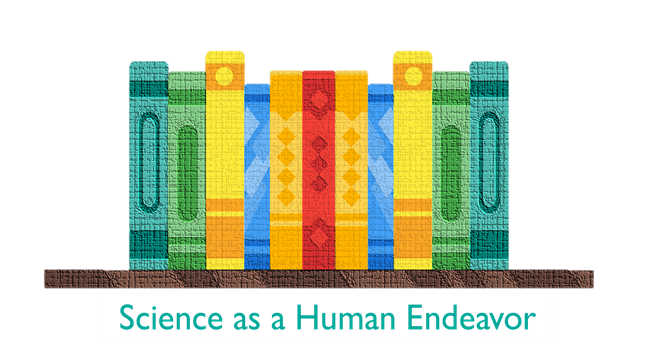
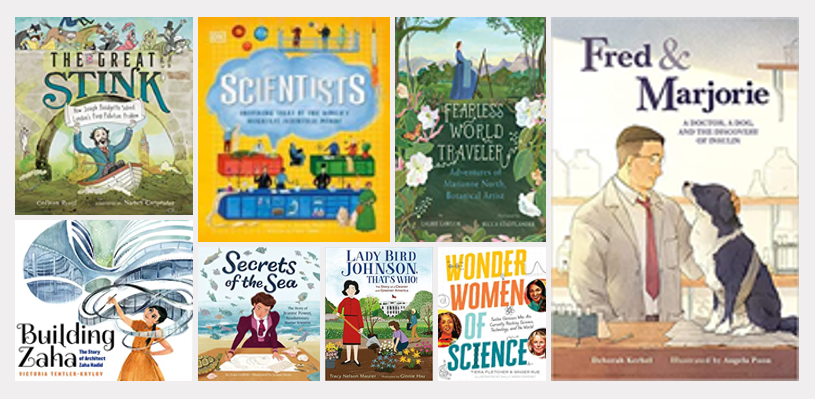
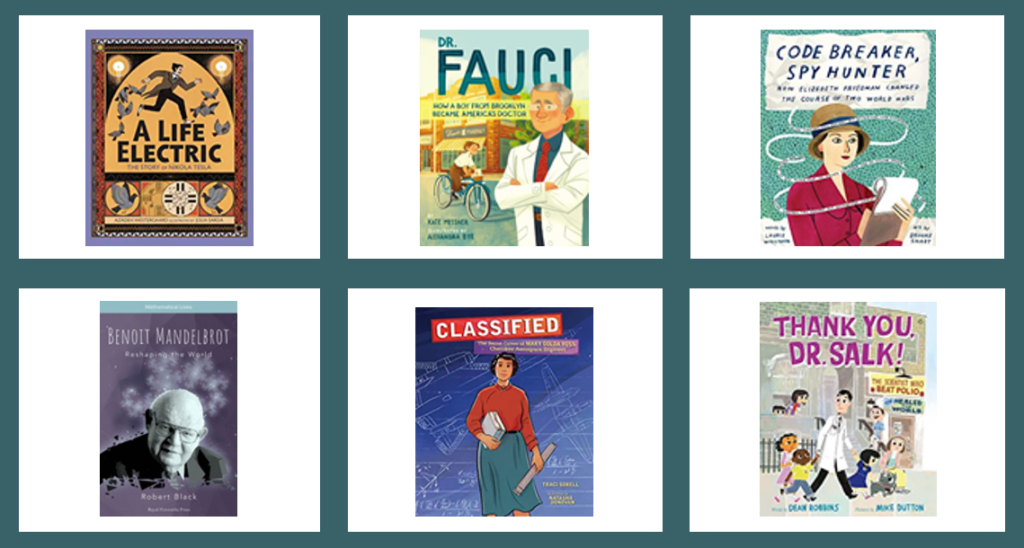
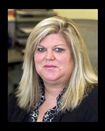
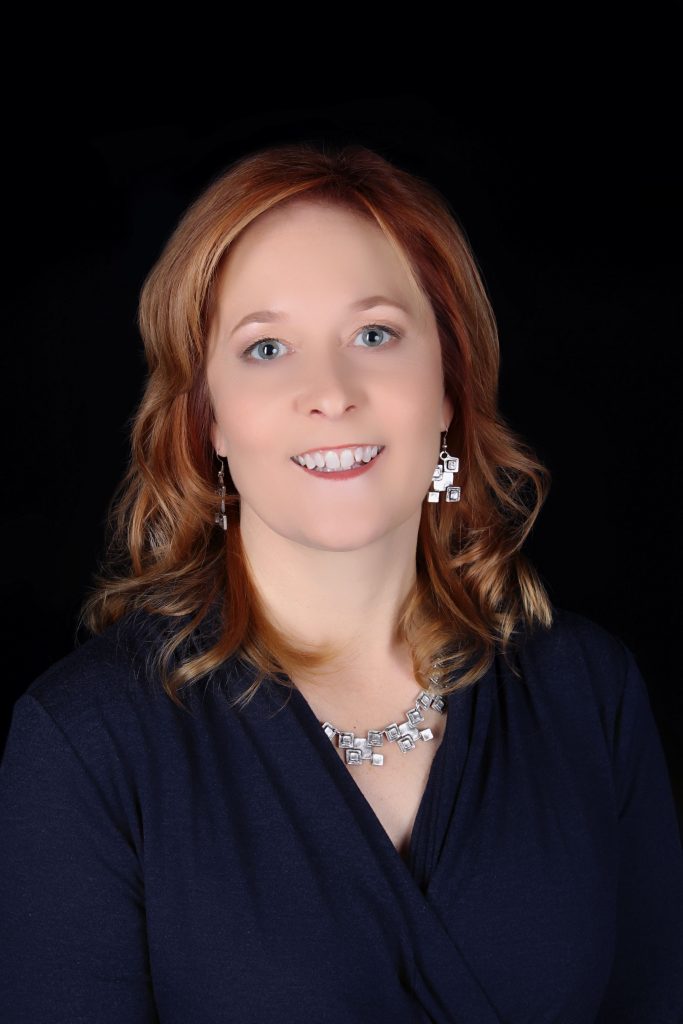
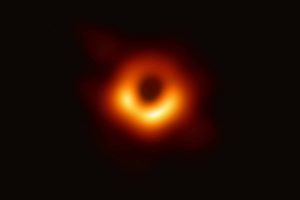
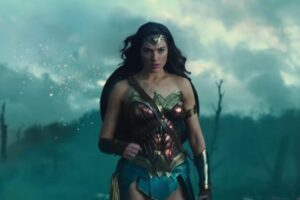
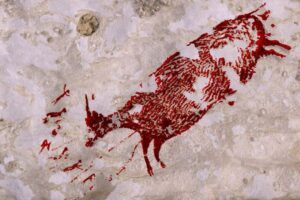


Leave a Reply
Your email is safe with me.